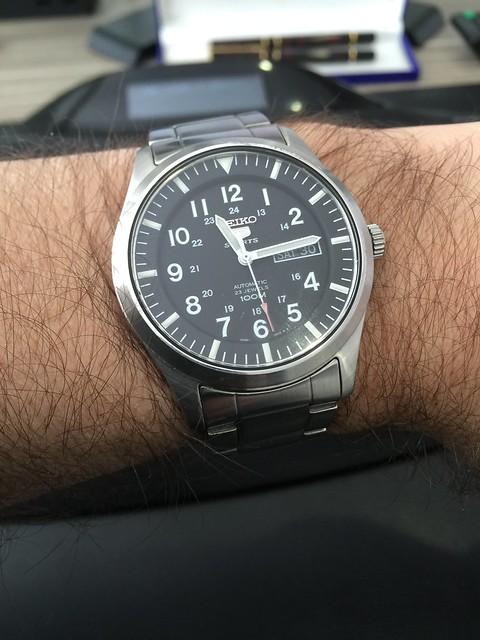Ok, thanks for all the suggestions. I've looked at a lot courtesy of Creation and a couple of other sites. The Citizens never grabbed me. I keep getting drawn back to this: To me, this is stylish and understated. Twice my budget, but still cheap.
As much as I like the idea of some fancier watches, too many are way too busy and I'd buy features I'd never use. Some are too big. I've done all the newb stuff like check my wrist size, and 40-42 seems on the money. Tell me if I'm wrong, as I'm not into big watches. My Tag is 32 and even that looks like a ladies to me.
I've never like bracelets, so my rationale for going the blue over the black is that I can get colour natos for this, or even a half decent black strap, and it'll look class.
Any reason to use Creation over Skywatches in Singapore or vice versa? Both of them have these, and prices are the same.
@Drubbing - that is a very nice looking watch.
@Mark1966 is spot on regarding Auto/Kinetic. Another thing to note is that kinetic watches do not need batteries, being self-charging, but the capacitor will usually fail after a few years.
Watch case diameters are a matter of fashion. Big cases started to become fashionable around the turn of the millennium, and are still "in".
In the '50s, the typical diameter was 32mm. They became slightly larger in the '60s, and there was a short period when large square cases were the go in the early-mid '70s. From then on, the typical case diameter has been 36mm, with a 38mm dial being considered large.
We are now in a period where 40mm is becoming the norm, and a large watch is 44-48mm.
Frankly, unless you are a huge human, these large diameter watches look (to me at least) like you have an alarm clock strapped to your wrist.
I am a big bloke (190cm), so my watches are in the range 36mm - 42mm.
If you look at wrist watches holistically since their inception, the classic size for a dress watch is 34-36mm, and 36-38mm for a sports watch.
I think the watch you have identified is a good'un - it caught my eye also.
Another critical factor for mechanical watches (automatic or hand-wind) is the need for servicing every 3-5 years. With a battery or kinetic watch, this is typically a quick battery/capacitor change, fit new seals, and pressure-test.
With a mechanical watch, this involves disassembling the components, cleaning in ultrasonic bath, reassembling, lubricating, and adjusting regulation. This can be quite expensive, and the watch manufacturers notoriously try to monopolise parts and employ scandalous price gouging for service costs (similar to tactics employed by Car manufacturers).
I have a lot more knowledge and experience with watches that I do with shaving. I am also in Perth, so if you feel like catching up for a pint and a chat, drop me a line. With respect to parts and servicing, I can put you in touch with an excellent Swiss-trained independent watch maker. He is Perth-based and I've used him for the last 15 years. His prices are very reasonable and the quality of work is as good as anyone in Australia.



